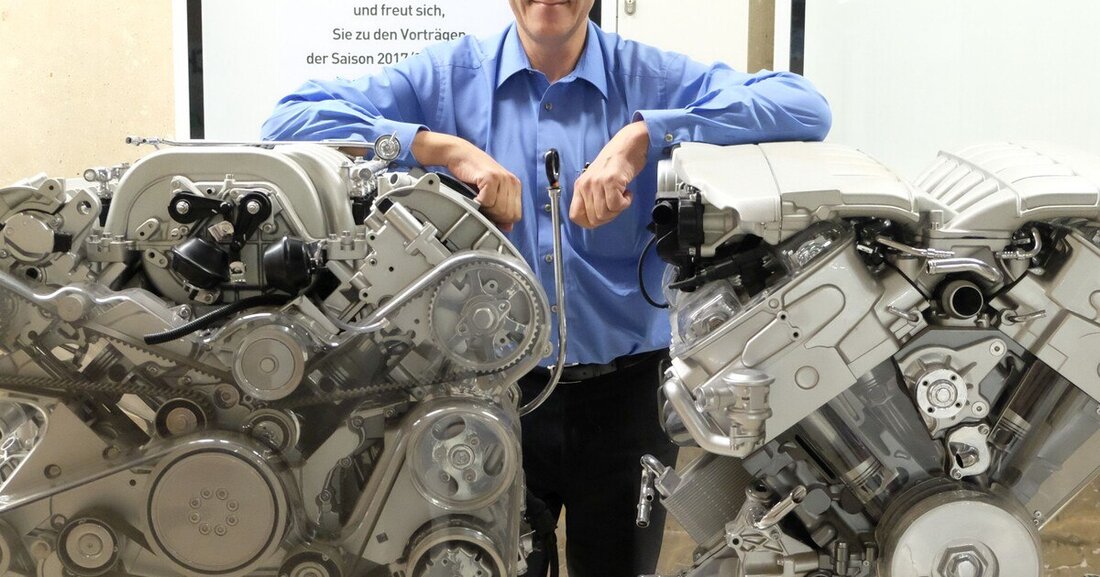Engine Symposium 2021: Farewell to the combustion engine
At the 42nd International Vienna Engine Symposium, held online, more than 80 managers, engineers and scientists from engine development as well as representatives of public organizations and clubs gave an outlook on the future of mobility.

Engine Symposium 2021: Farewell to the combustion engine
The two-day online conference organized by the Austrian Association for Motor Vehicle Technology (ÖVK) was under the motto “Decarbonization”. The fact is: the 2050 climate target will radically change the world of car manufacturers. By the end of this decade, Markus Duesmann, CEO of Audi AG, expects the global share of combustion engines in the premium segment to fall to 50 percent. Audi is therefore relying on a consistent electrification strategy: “We are planning more than 20 fully electric models by 2025,” says Duesmann. He sees the key to the economic success of the electrification goal in the consistent platform strategy within the VW Group. Audi and Porsche are jointly developing the Premium Platform Electric, on the basis of which seven million vehicles are expected to be sold by 2030.
The CO2-neutral star
According to Torsten Eder, Head of Powertrain Development at Mercedes-Benz AG, Mercedes-Benz is pursuing a long-term vision of electric and CO2-neutral mobility, the “Ambition 2039”. By 2039, Mercedes-Benz's new car fleet will emit CO2 throughout its entire life cycle2-be neutral. On the drive side, Mercedes-Benz is pursuing a three-pronged strategy in the transformation, starting with 48-volt electrification through plug-in hybrids to fully electric drives. Mercedes-Benz is the only car manufacturer to also offer a diesel hybrid variant.
Porsche relies on e-petrol
Porsche wants to manage the inevitable transformation with a mix of high-performance gasoline engines, hybrid and battery-electric models. The gasoline engines are being continuously improved and will be powered by e-fuels CO in the future2-operated neutrally. Porsche is currently building a pilot plant for e-fuels in Chile together with Siemens Energy and Exxon Mobil, which will produce 15 million liters of e-fuel per year in series operation. In 2022, Porsche wants to test an internal combustion engine powered by electric gasoline in a 911 GT3 Cup racing car.
Mix of drive types
According to Stefan Hartung, Managing Director of Robert Bosch GmbH, the 2050 climate target can only be achieved with all types of drive combined. In addition to electric drives, the supplier attributes a major role to hydrogen fuel cell drives in the future. Bosch is working on both stationary and mobile fuel cells and wants to invest one billion euros in this technology from 2021 to 2024. Bosch also operates projects with hydrogen-powered combustion engines. According to Hartung, the conventional combustion engine can also make a contribution to climate protection. With synthetic CO2-poor or CO2-free fuels as an admixture could immediately make new and used vehicles more environmentally friendly, without any modification. With a global car population of 1.3 billion vehicles, this option is often underestimated.
Cost-effective mobility
“The future is electric, and it has already begun,” says Thomas Stierle, head of the Electrification Technology business unit at Vitesco Technologies. He cites cost reduction as a key role in the success of electric drives. In order to make the purchase costs of an electric car, which are still higher than those of a combustion engine drive, affordable, Vitesco Technologies relies intensively on savings in electronics and software through modular and scalable systems. These are also easier for the car manufacturer to integrate into the vehicle. According to Stierle, hydrogen fuel cell propulsion is particularly attractive for commercial vehicles, ships and trains.
Expansion of infrastructure
Uwe Wagner, Head of Research and Development at Schaeffler AG, predicts a global share of electrified drives in new cars of 70 percent by 2030, of which 30 percent will be battery-electric and 40 percent will be hybrid drives. By 2035, the global share of purely electric new vehicles will rise towards 50 percent. Wagner demands that, in addition to the drives, the necessary energy production and infrastructure are also taken into account. Europe will have to import a lot of green electricity in the future. In order to be able to store this and transport it over long distances, hydrogen, for example, is required. Schaeffler is therefore working intensively on systems and components such as bipolar plates for fuel cells and electrolysers.
Summary and outlook
Bernhard Geringer, Chairman of the ÖVK, sums up: "There are many promising solutions, from combustion engines with e-fuel to pure battery-electric drives. None of them can alone meet the multi-dimensional requirements for greenhouse gas reduction, efficiency, costs and global availability."

 Suche
Suche
 Mein Konto
Mein Konto